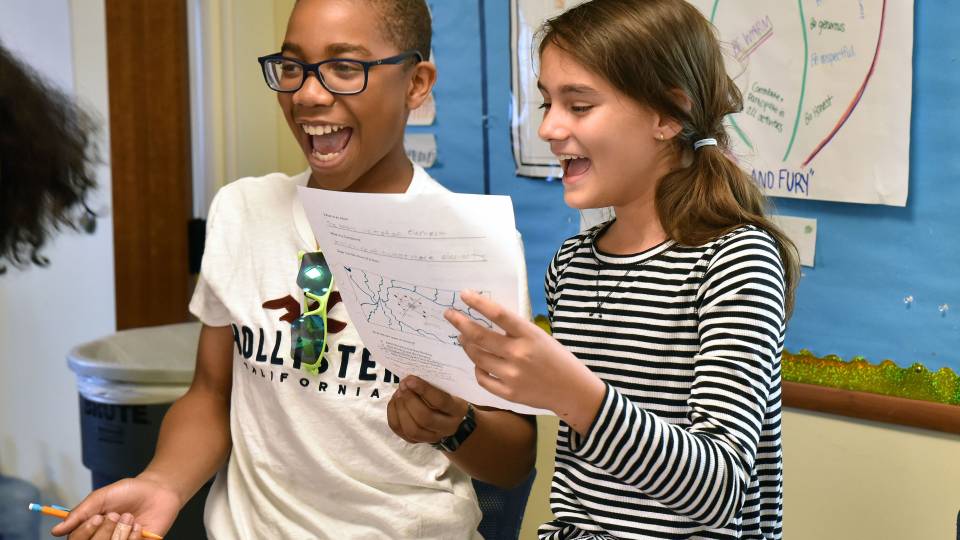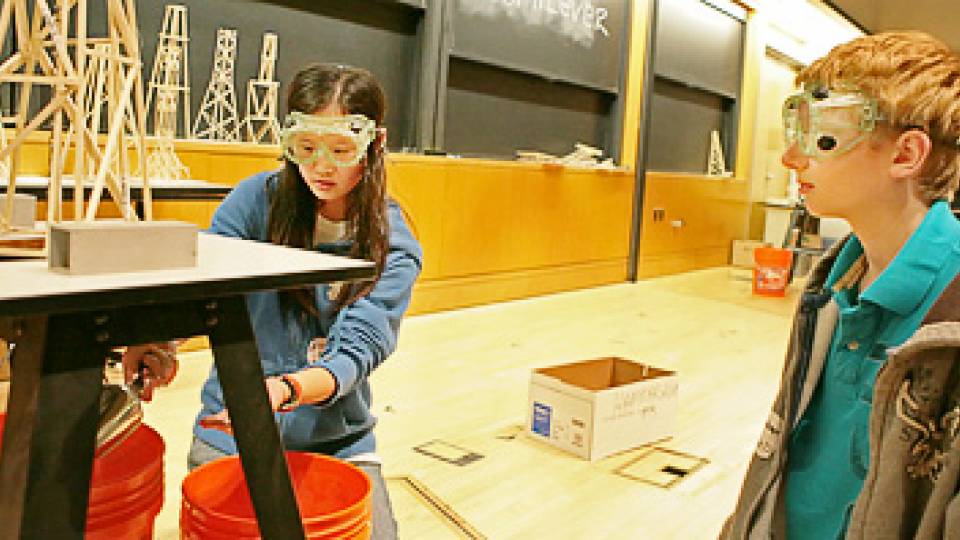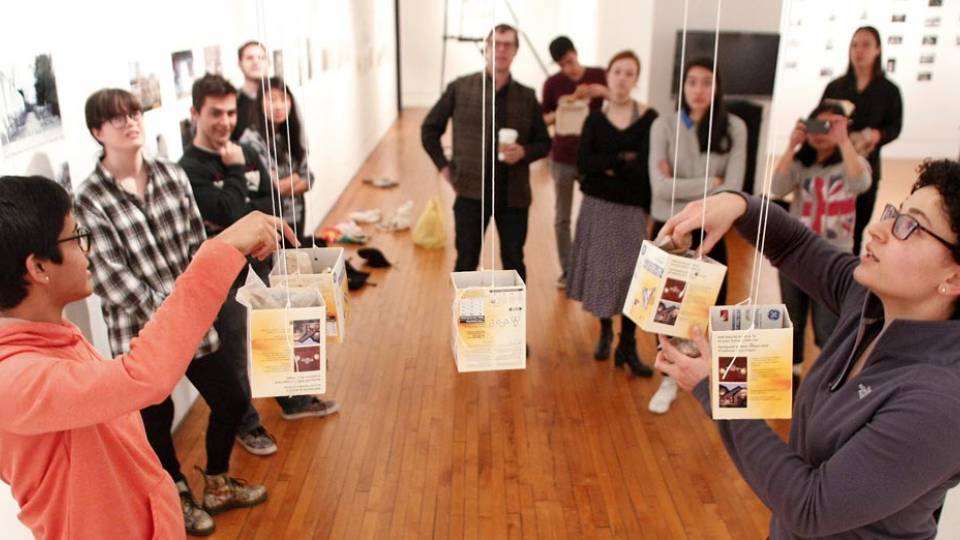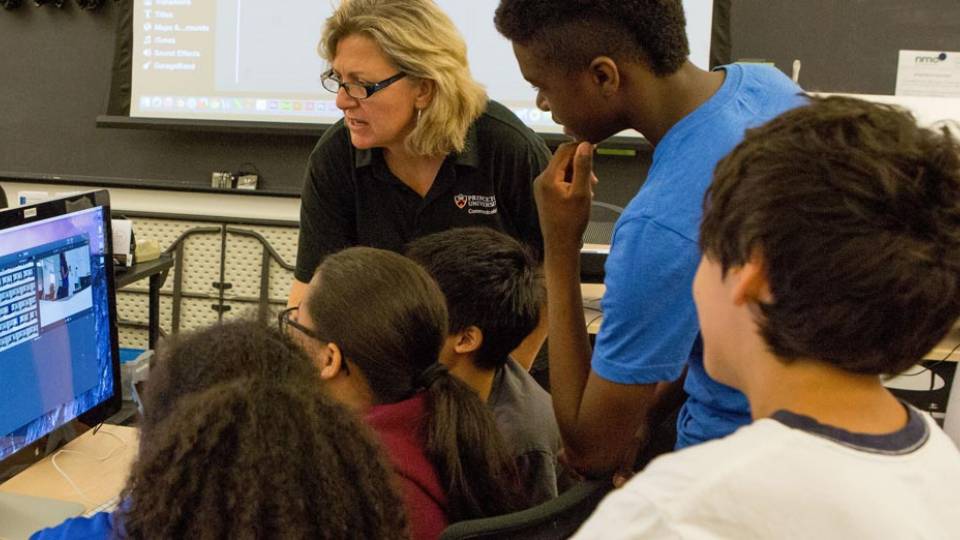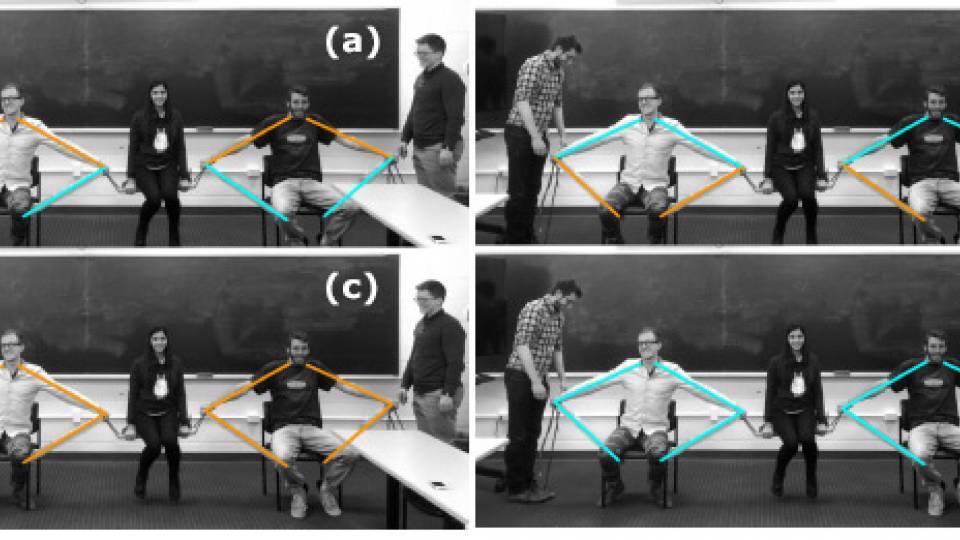seventh graders huddled eagerly around Christy Sander '03 as she placed weights along a bridge made from Popsicle sticks, masking tape and corrugated plastic.
"It's still standing," reported 12-year-old Carley Moseley as she admired her creation, a two-foot-long suspension bridge that was still intact with 10 pounds of weights along its span. It buckled at 15 pounds, the class record. "Not bad," according to Carley.
The bridge-building assignment is one of dozens of projects underway this spring as part of the University's Learn-by-Teaching initiative. The program offers undergraduates the chance to spend several days teaching some of what they have learned in their science and engineering courses to youngsters at local schools.
Run by the McGraw Center for Teaching and Learning, the program gives Princeton students an alternative way to complete their coursework while gaining exposure to teaching. And it enriches the science classes of hundreds of Mercer County youngsters in the third through ninth grades.
This semester, 67 Princeton students participated. Enrolling in the program allows a student to skip a term paper or final exam and teach three days instead. Preparation involves practical teaching methods including the development of innovative lesson plans.
"It's been an incredible experience," said Sander, a history major who did the project for a civil and environmental engineering course called "Structures and the Urban Environment." "I can't believe what the kids have come up with," she said.
The project also was a hit with the seventh graders, who attend John Witherspoon Middle School in Princeton. Mike Denchak enjoyed building his suspension bridge because "we got to show our talent and creativity." "Plus we get to wreck them," another student noted.
The bridge wrecking was, of course, part of the lesson. After figuring out which team's bridge was the most economical - several teams exceeded their budget in string and Popsicle sticks - each bridge was tested to see how much weight it would hold.
The students were riveted as they watched their creations go down one by one. Sander placed half-pound weights along each of the bridges, which were suspended between two tables. Some lurched slowly to their finale; others snapped in two.
Roz Goldberg, a retired high school teacher recruited by the program to advise the Princeton students, said the projects were an effective way for college students, particularly non-science majors, to absorb the lessons of a science course.
"From a teacher's point of view, you never really understand something until you can explain it to someone else," she said. "They really had to understand it to explain it to seventh graders."
The program also encourages many students to start to consider careers in education. Program director Margaret Fels said one Princeton senior, who participated in the course last year, will start teaching at a middle school in Washington, D.C., this fall. "This is a more lasting experience than taking the final exam," she said.
Contact: Marilyn Marks (609) 258-3601
